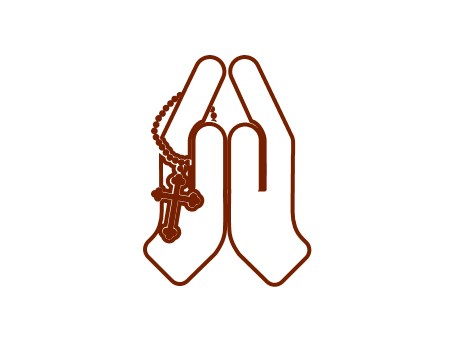Solidarity
Upper Primary
How can I act in Solidarity?

Thu and his wife Linh live in the Quang Tri province, Vietnam. After Linh suffered a stroke, Thu became her primary carer. Photo: Phan Tan Lam/Caritas Australia
Inquiry Question: How can I act in Solidarity?
By the end of this unit, students will be able to demonstrate their understanding of solidarity and identify how they can act in solidarity with others.
Before you start:
- Watch the Catholic Social Teaching (CST) film, ‘Solidarity’, for your own background and familiarise yourself with the Solidarity comic.
- Download the various resources referenced at the bottom of this page (worksheets, slides etc.) Print student handouts and have weblinks ready to go on your computer/interactive whiteboard.
- Read/watch the stories and videos linked in this learning sequence to determine if they are appropriate for your class.
- Locate any Scriptures and copies of Church texts hyperlinked within the learning sequence below.
- Read Scripture commentaries hyperlinked within the learning sequence below.
See-Judge-Act-Pray Process
This learning sequence has been created using the ‘See, Judge and Act’ model.
This reflection–action process was first used by a Belgian Catholic priest, Joseph Cardijn (who later became a Cardinal) with Young Christian workers prior to the first World War.
This approach was also recommended in the 1961 encyclical letter written by Pope John XXIII called Mater et Magistra (Mother and Teacher).
Definition
- a firm and persevering commitment to the common good, which reminds us that everything is related
- the act of standing shoulder to shoulder with others
- a way of saying, ‘I’m here with you’.
Student-friendly explanation:
- We are all connected.
- We need to work together and support each other as one human family.
Learning intention
We are learning:
- What is solidarity?
- Who needs our solidarity?
- What does the Parable of the Good Samaritan, the Corporal Works of Mercy and the Beatitudes teach us?
- What does the Church teach us about solidarity?
- How can I act in solidarity?

SEE
Play ‘supporting limbs’. Have students get into small groups of 3 or 4 people. The idea of the game is for the group to support each other so that not everyone has to stand on the floor. Nobody is allowed to sit on the floor. Roll 2 dice, one dice is for number of feet that can be touching the floor, the second dice is for the number of hands that can be touching the floor. Debrief the game by explaining there are times we need the support of one another, but we also need to support our neighours. As Christians, we are invited to love everyone, especially those in need, regardless of who they are, where they are, or where they come from.
Source: https://www.jesus-without-language.net/young-jesus-luke-2-play-2/
Refresh students’ knowledge on the meaning of Solidarity. Refer to the student-friendly definition of solidarity above.
Explore different case studies as examples of solidarity. Break students into groups of 3 or 4 and allocate them a case study to learn about someone and/or community Caritas Australia has supported. Case studies: Priscilla, Janice, Anatercia
Provide students with their allocated case study (Priscilla, Janice, Anatercia) and student handout to be completed.
This may be completed as a rotational activity, or students may share their learning with the class.
Explain to the class, that we all have the responsibility to act for justice in the world. Pope Francis explains that ‘Concern for the environment thus needs to be joined to a sincere love for our fellow human beings and an unwavering commitment to resolving the problems of the world.’ (Laudato Si’ n91) As a class, discuss the meaning of the quote. Then use the Two Stray, One Stay method to explore what problems the world is facing, how these impact people and the environment, and how Caritas Australia is working in solidarity with communities.

JUDGE
Read Parable of the Good Samaritan (Luke 10:25–37). Break out the Scripture reading by explaining the context. Utilise Three Worlds of the Text commentary.
Ask students to reflect on what it would be like to be part of the story and provide examples of a time when they have behaved like the different characters parable (Priest, Levite, Samaritan, Innkeeper).
Explain to students, that the Good Samaritan’s actions exemplify mercy and compassion, which we are all called to do.
Read through the Solidarity comic. Re-read the first four frames. Discuss the modern-day example being used in the comic and form connections with the Parable of the Good Samaritan. Re-read frame 5 to discuss the meaning of solidarity. Explore the idea of solidarity and refer to how solidarity is witnessed within the Scripture.
In frame 5 of the comic it states, “The parable asks us to look beyond social or other barriers and love our neighbour. To be the person who responds and acts with love.”
Brainstorm as a class, barriers that can prevent us from responding and acting with love to the needs of others.
Re-read the final frame and discuss the three ways people are responding and acting with love (solidarity). Invite students to identify more examples of their own.
Create a modern-day skit of the Parable of the Good Samaritan.
Distribute one quote from the Fratelli Tutti Encyclical Quotes handout to each pair of students. Students read the quote and discuss the take-away message. Have students stand, with their pair, in a circle with the class to share. One person reads the quote, and the other student states the take-away message.

Act
Have students write a commitment statement on how they will continue to act in solidarity in their daily lives.
Using these commitment statements, create a Solidarity Wall to display student’s commitments in the classroom.
For example:
- I will commit to fasting ____ during Lent.
- I will commit to speaking out against ______ ,
- I will commit to fundraising for Caritas Australia by ______ ,
- I will commit to caring for the environment by taking home any rubbish I find at the park etc.

Pray
Song: ‘Unconditional’ by Matt Redman and Matt Maher
Reading: Parable of the Good Samaritan (Luke 10: 25 – 37).
Action: Invite students to share a prayer reflecting on their learning about solidarity and how people can act in solidarity with others.
Related downloads:
- Solidarity comic
- Solidarity handouts
- Case studies: Priscilla, Janice, Anatercia












